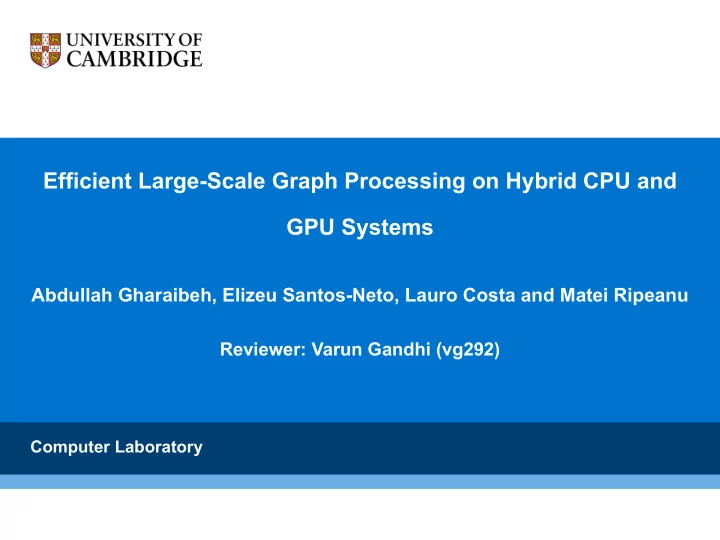

Efficient Large-Scale Graph Processing on Hybrid CPU and GPU Systems Abdullah Gharaibeh, Elizeu Santos-Neto, Lauro Costa and Matei Ripeanu Reviewer: Varun Gandhi (vg292) Computer Laboratory
CPU-GPU Hybrid Systems One of the fastest desktop CPU & GPU + 8 cores 2048 CUDA cores 2
Conventional Applications 3
New Dimension Single node graph computation 4
Real-world graph characteristics Single node bottlenecks • High memory foot print • Heterogenous degree • Cost of partitioning Key Idea • Load balancing across GPU & CPU • Algorithm agnostic • Different than GraphCHI 1 5
Hybrid Model • Two processing units • Communication rate: edges per second • Majority of edges remain at CPU • Random partitioning 6
Simulation Results Predicted gains based on simulated model 7
TOTEM • Implemented in both C & CUDA • Adopts BSP model • Computation phase • Communication phase • Termination 8
Trade-off: Graph Representation • Compressed Sparse rows • Low memory footprint • Expensive updates 9
Trade off: Communication Overhead • Mutable graph structures expensive • GPU cannot be leveraged • Outbox values copied to Inbox • Aggregate at source • Transfer based on user-provided callback 10
Graph Partitioning • High degree — GPU • Low degree — CPU • Leverages low communication overhead • Fails to maintain boundary edge threshold 11
Synthetic Workload 12
Evaluation 13
Conclusions • CSR representation not ideal • Dependent on GPU memory • Keniograph is a possibility • New paradigm in graph computing 14
Recommend
More recommend